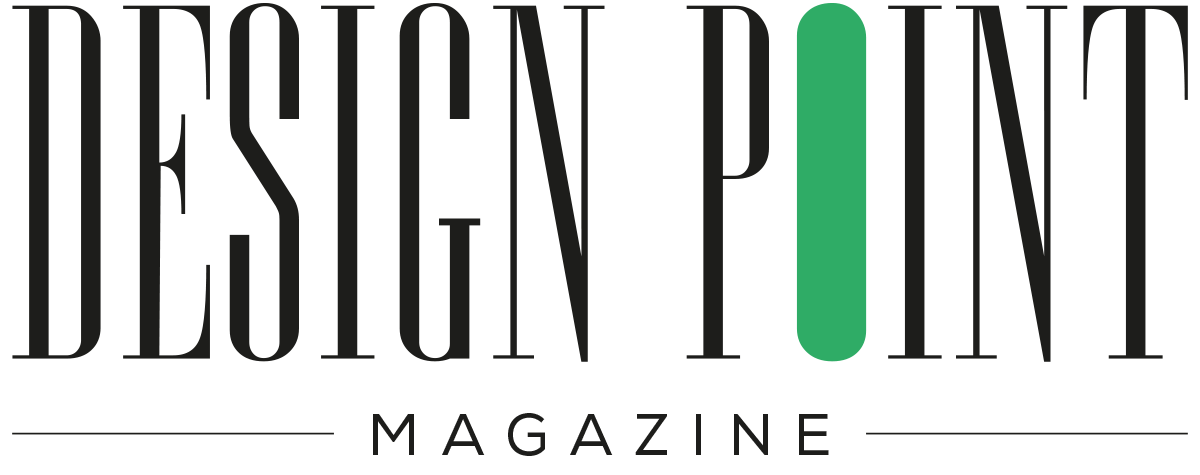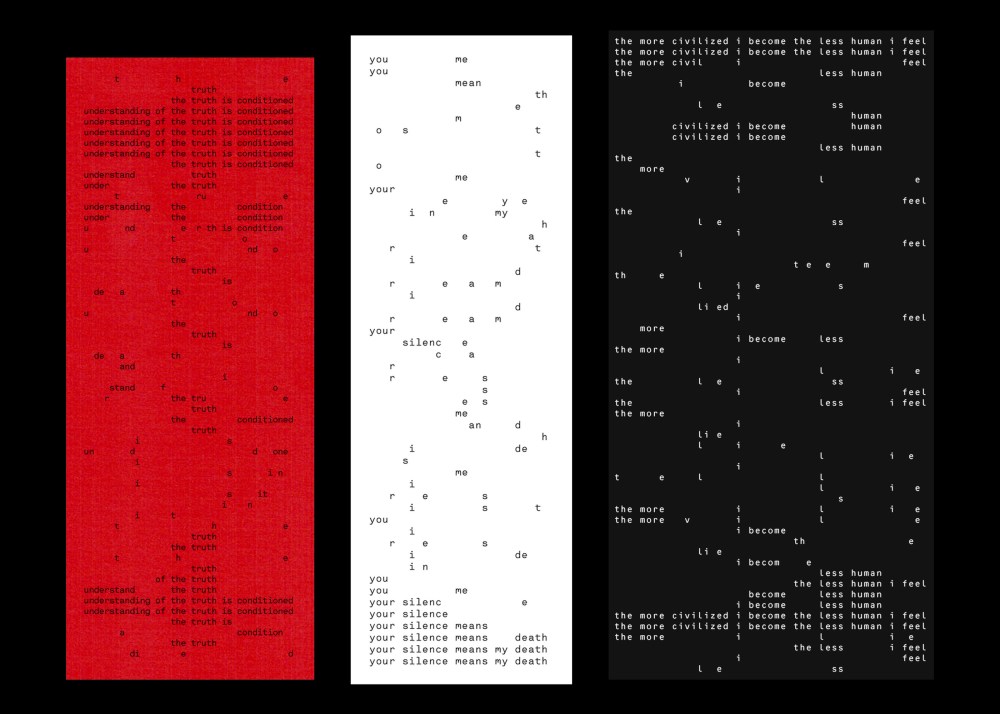Rida Abbasi was born and raised in Bahawalpur, Pakistan, a small city in Punjab. Growing up, “I was always creative and curious—writing, illustrating, linocutting, making cards, jewelry, and eventually experimenting with Adobe and HTML,” she says. Looking back, design was inevitable and consistent with her curious nature as a child, and she always gravitated to it in its various forms. Abbasi moved to the U.S. and then Canada for school, and eventually relocated to Australia as an exchange student during her undergraduate studies. She ended up staying longer for a master’s degree in communication design and establishing her design practice in Melbourne.
When introduced to Abbasi’s work, I was drawn to her precision with typographic poetry and data viz simplicity. Her most striking work is crisp yet not rigid. I was particularly interested in “The Trump Discourse Analysis,” which is at once intelligent, witty and elegant. She discusses it, among other things, below.
Typographic Poems
Growing up, was it tough to be a graphic designer in your native country?
It was tough to find professional art education in my city growing up (as it was rare to find art teachers),|but Pakistan as a country has a rich visual culture which is quite nurturing for creatives and designers, in my opinion. I moved overseas while still a teenager but I see the design scene has now exploded in Pakistan with the technology and internet boom.
What have you found challenging?
In finding my voice as a designer, I’ve been challenged in looking for historic examples and practice precedents of Pakistani designers. Typesetting in Urdu and Arabic is also challenging. And finally, balancing my design education and sensibilities such as Western vs. decolonized/native; intuition vs emotion.
Typographic Poems
There is a beautiful precision in what you do. Do you consider your work a continuation of Modernism?
Thank you! I’ve never thought of it as such. [But] there are a lot of values/motivations that are shared, such as experimentation, abstraction, subjective experience.
There are some very tight examples of data visualization, especially the sentencing guidelines for drug use. Can you tell me how this specialty is part of your practice?
Communicating complexity and translating it for everyday audiences is at the heart of what design is, to me. I found my love for data viz through experimentation and nurtured it through practice; interestingly, all my clients have come to me citing my previous data viz experiments as inspirations for corporate projects. I find myself returning to data viz quite often, because everything is data and data is everywhere, and that kind of precise communication ability is now more in-demand than ever, with the rise of big data, algorithms and AI.
Sentencing Advisory Council
Judging from your website, you run a wide gamut of corporate and product clients. Are you a generalist, or is there a single passion that I’ve overlooked?
I feel very fortunate that these clients have found me, and usually referenced previous experiments as inspiration for our briefs. I would say I’m a generalist whose passion is the intersection of technology and visual communication. A lot of my growth as a designer has come from my practice extended across disciplines, and I’m always seeking inspiration and the next challenge for my design practice to grow from.
The post The Daily Heller: Typographic Elegance, From Pakistan to Australia appeared first on PRINT Magazine.

